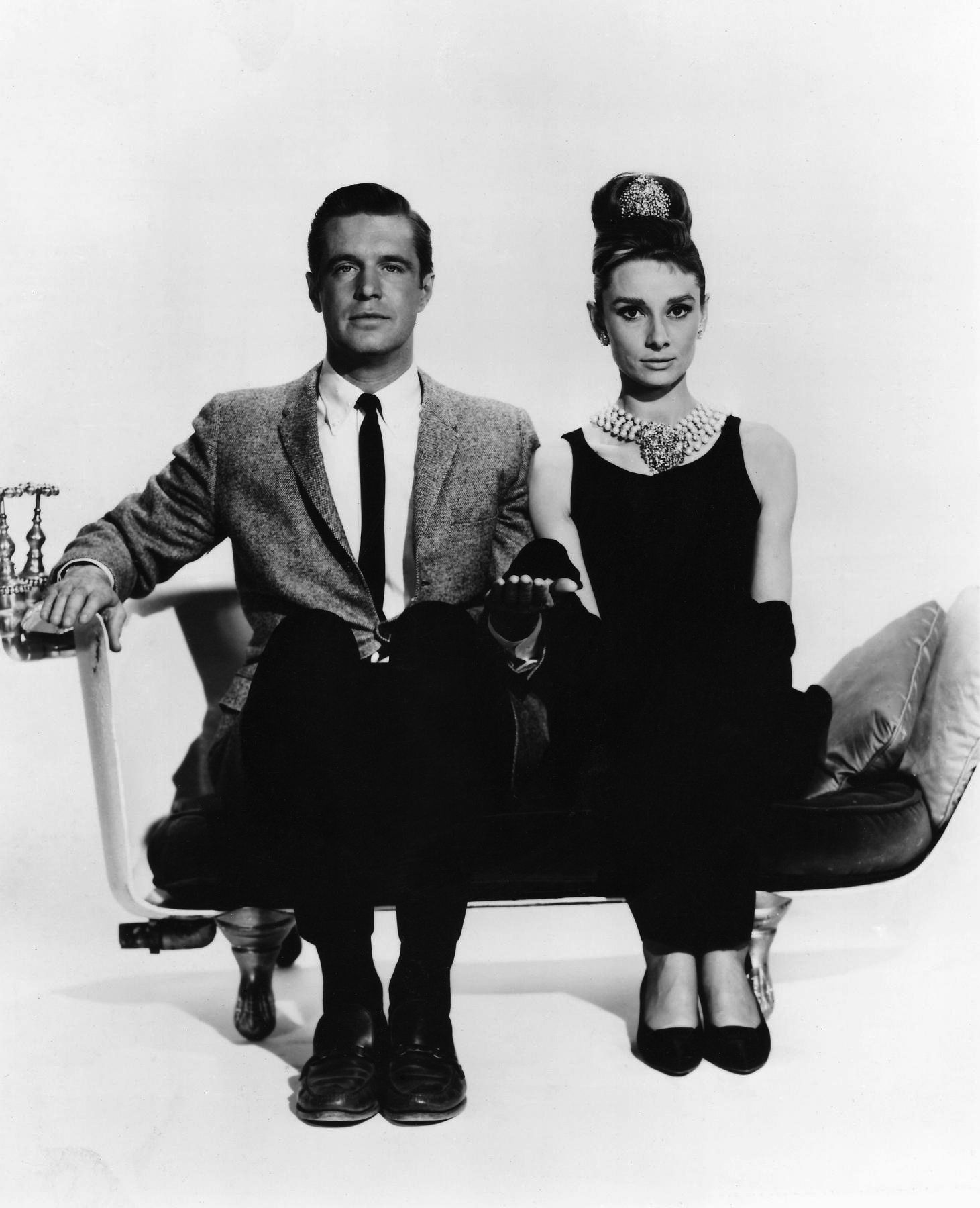Film Review: Breakfast at Tiffany's
by Vic Neptune
The opening shot of Blake Edwards’ 1961 social comedy Breakfast at Tiffany’s shows a fresh-looking Manhattan street at dawn. This image acts as a prelude to numerous beautiful shots of 1960-1961 New York through which the principal actors, Audrey Hepburn (Holly Golightly) and George Peppard (Paul Varjak), stroll, get in and out of cabs, wait for the light to change at crosswalks. As someone who finds such surrounding environments interesting, I enjoyed this aspect of the film very much. The movie sits inside New York of that time when a new decade opened, closing so differently in 1968- 1969 with events as disparate as assassinations, the Manson murders, and Woodstock. In this film, everybody on the streets, in bars, at parties, are dressed neatly.
Audrey Hepburn’s clothes as well as Peppard’s look high-end even as they go casually about their day. This is a well-dressed world so different from ours that the characters look stylized, unreal, and yet, to look in old newsreels from that time and before, one sees that dedication to a neat appearance.
The characters within their world would not find anything remarkable about this. Holly Golightly (a Dickensian name but also her own pseudonym, for she’s really Lula Mae) goes into her bedroom while Paul (whom she calls Fred, after her soldier brother), waits outside. Talking a long stream as if to fill every empty space in her life, Holly emerges wearing a black dress and an amazing hat almost as wide as a parasol.
“How do I look?” she asks him.
Being Audrey Hepburn, she looks great, but Paul keeps his fascination for her in a low key for much of the film. A writer under the patronage of a rich older woman, 2E Failenson (pronounced Too-ey, played by Patricia Neal), Paul has moved into the apartment above Holly’s place. Holly’s flightiness makes her seem like a moth, barely touching any surface for long. She invites him to a party in her apartment. The growing accumulation of guests turns the gathering into a cramped and loud throng with people becoming increasingly inebriated. Holly, obliviously, sets fire to a woman’s hat from her extensible cigarette holder--another guest puts out the fire with his drink, the woman with the hat doesn’t notice.
Blake Edwards’ comedy films (The Pink Panther, A Shot in the Dark, The Great Race, 10, and others) tend towards wild madcap humor, but Breakfast at Tiffany’s was made before those, possessing a stronger attempt at poignancy, with dramatic elements, for Holly Golightly’s interior personality, rarely glimpsed, is one of flight and avoidance as she seeks comfort in the arms of rich men, none of whom satisfy her heart. That is, until she meets Paul, who gradually breaks away from 2E Failenson and her money, making his own money as a writer after a dry spell of several years, his previous book of short stories a financial and critical failure.
The film’s two leads, both of them strong in their performances, stand out as my main recommendation. I knew going in that Audrey Hepburn would be good. An excellent actress, she possesses a startling screen presence, commanding each scene she’s in, but George Peppard does the same. Known in later years as a tough guy in the TV show The A-Team, George Peppard, acting opposite the beautiful and bright Audrey Hepburn, somehow manages to be as interesting as Holly Golightly, but more in a straight man- type of role; subtle, quieter, supportive of the main character. Without him, Holly Golightly would fly away into the ether.
Holly and Paul start out as friends, then it gets romantic. For anyone who’s ever been in that situation, there should be recognition as one watches this film. Thus, Breakfast at Tiffany’s felt charming to me on a personal level.

Breakfast at Tiffany’s
Directed by Blake Edwards
Screenplay by George Axelrod
Based on Breakfast at Tiffany’s by Truman Capote
Produced by Martin Jurow, Richard Shepherd
Staring Audrey Hepburn, George Peppard, Patricia Neal, Buddy Ebsen, Martin Balsam, Mickey Rooney
Cinematography by Franz F. Planer
Music by Henry Mancini
Paramount Pictures
114 Min., 1961, United States




